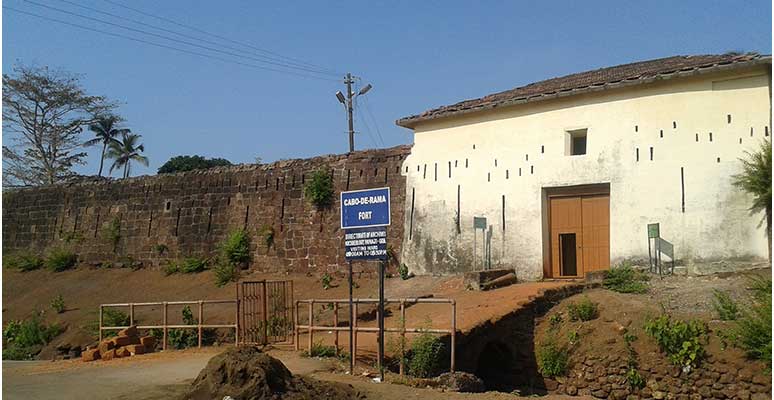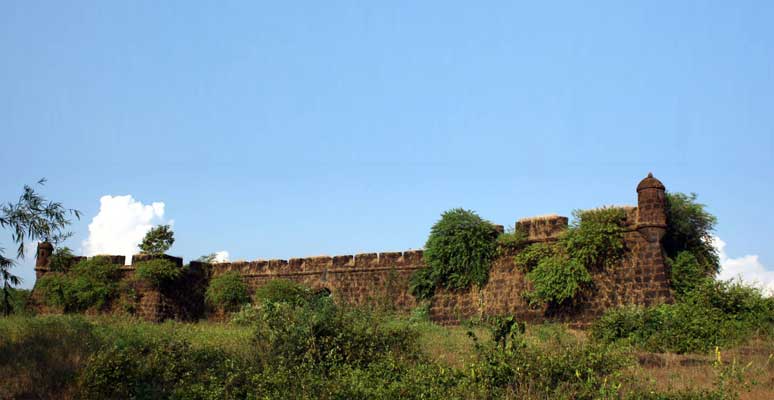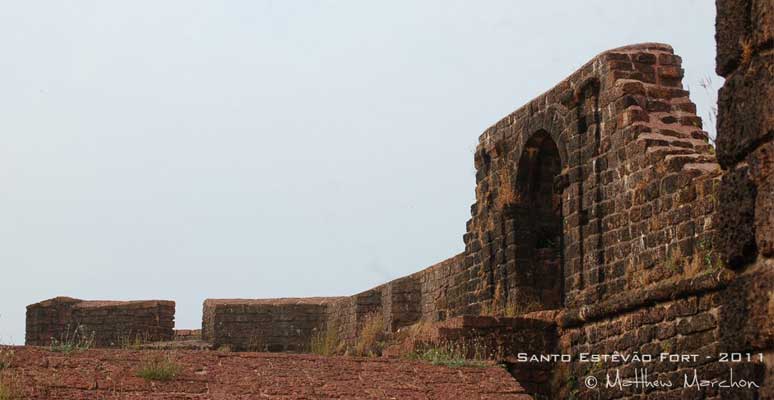Cabo de Rama Fort – Cancona South Goa
This 18th Century Portuguese fort is situated in South Goa and acted as the sentinel of Goa’s southernmost borders. Portuguese claimed the Cabo de Rama Fort after defeating the Raja (King) of Soonda. They renovated the fort and equipped it with 21 guns, a military barracks, a commandant quarters and a chapel. This fort was their defense of the southern-most part of Goa.

The chapel of Santo Antonio inside the fort is in excellent condition and still has a service for devotees. This whitewashed chapel contrasts starkly with the black walls and ramparts of the fort. The view from here is beautiful. The cliffs drop steeply into the sea. You get a panoramic view of the surrounding areas and the entire length of Cabo de Rama beach and the Canacona stretch.

The area (Cabo de Rama) is named after Lord Rama, who is said to have lived in the area with his wife Sita during his period of exile. Its most spectacular offering is the view to the north and south. Perhaps that’s why it served as a sentinel for the Portuguese.
Corjuem Fort – Aldona
Corjuem Fort, located on an island by the name of Corjuem, in Aldona, in the Bardez district of Goa.

The fort was originally occupied by the Desai’s of Sankhali. Later, it was taken over by the Sawant-Bhonsle of Sawantwadi. The Portuguese viceroy, Caetano de Mello e Castro brought it under Portuguese control. He used it to boost the Portuguese defense of Panjim.
In the early 1800s, the fort was used as a Military School. A battery of four guns existed to defend the fort. A chapel inside served under the parochial church of Aldona.
An interesting story exists about an ambitious Portuguese woman named Ursula e Lancastre, who was so determined to see the man’s world that she dressed like a man and travelled the world as a Portuguese soldier. Eventually, she landed up at Corjuem as a soldier.
In 1700, when Ursula e Lancastre completed eighteen years of age, she left home and headed for Lisbon. She wanted to live the adventures of Cavalry and Crusades that were forbidden to the women of her time. When she arrived in Lisbon, she enlisted herself as a soldier, under the false name of Baltasar do Couto Cardoso.
She served in the Portuguese army, in Portuguese India, dressed as a man, in 1700-1712. At some point, she was stationed at the Corjuem fort in Goa.
St. Estevam Fort – Juven Village
St Estevam is an Island in Ilhas, (Near the Island of Divar) Goa, India. The island is also known by other names such as ‘Juvem’ and in the past was known as ‘Shakecho Juvo’ meaning ‘the isle of vegetables.’ It is famous for a particular variety of long, seven-ridged, light green ladyfingers. This is why the people of Juvem came to be nicknamed ‘bhende’.

St. Estevam (St. Steven) is also famous for the St Estevam fort. The fort, which is on a hillock on this island, was built in September 1668. It was named the fort of St Francis Xavier. It also goes by the name of the fort of Jua. From St. Estevam village, you can reach the fort by a fairly terrific flight of rough steps. The climb is well worth the effort. At the top, you’ll find a modern but impressive shrine to Christ the King. In 2011 the fort was restored by a non-profit organization called The Indian National Trust for Art and Cultural Heritage (INTACH).


